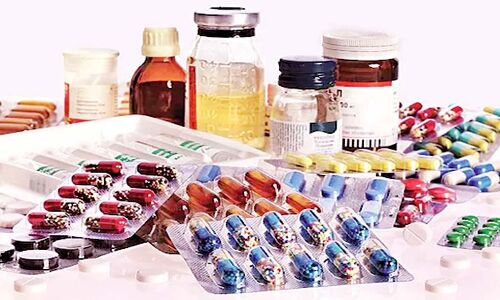As the country handled the third wave of the pandemic better with fewer serious cases, the injection of foreign capital also saw a decline in the 2021-22 financial year. Going forward, the government should do more to attract more FDI inflows into the pharmaceutical sector, which is one of the top ten attractive sectors for foreign investment in India.
After registering a growth of more than 200% in foreign capital inflows into the sector in the previous year, the inflow of foreign capital into the pharmaceutical and pharmaceutical industry in India registered a decline of 5.1% during the financial year just ended. from 2021-22. FDI inflow into the medicines and pharmaceuticals sector for the fiscal year ended March 31, 2022 was $1.41 billion, compared to $1.49 billion for the previous fiscal year ended March 31, 2021 The period from April 2020 to March 2021 reported an FDI inflow of $1.49 billion into the pharmaceutical and medicine industry, compared to a meager $518 million recorded during the financial year 2019-2020, registering a growth of 202% compared to the previous year. The economic study, published by the Union Ministry of Finance, for the year 2021-22 had acknowledged this growth, indicating that FDI in the pharmaceutical sector saw a sudden surge in 2020-21 compared to the previous year showing a 200 percent increase. The extraordinary growth of foreign investment in the pharmaceutical sector is mainly due to investments aimed at meeting the demands for therapeutic products and vaccines linked to Covid-19. However, as the country handled the third wave of the pandemic better with fewer severe cases, the injection of foreign capital also saw a decline in the 2021-22 financial year.
In fact, in the first six months from April to September 2022, FDI inflows into the country’s medicines and pharmaceuticals sector continued to be buoyant at Rs 4,413 crore, increasing at the rate of 53%. over the same period in 2020-21. . However, after that, FDI inflows into the country fell short of targets as FDI in the country’s medicines and pharmaceutical industry saw a decline of 3.2% in the first nine months of the 2021-22 financial year. According to data from the Union Ministry of Trade and Industry, FDI inflow into medicines and pharmaceuticals for the nine months ending December 2021 amounted to $1.21 billion, compared to $1.25 billion in the same period last year. During the October to December quarter 2021-2022, the inflow was $647.29 million compared to $879 million during the corresponding three months of the previous fiscal year, showing a decrease of 26, 4%.
FDI in the pharmaceutical industry is one of the top ten attractive sectors for foreign investment in India, accounting for about 3.3% of the total FDI inflow into the country. Foreign investment in pharmaceuticals in greenfield projects is allowed up to 100% under the automatic route and for disused pharmaceutical projects, foreign investment beyond 74%, central government approval is obligatory. After the abolition of the Foreign Investment Promotion Board (FIPB) in May 2017, the Department of Pharmaceuticals (DoP) was given the role of reviewing foreign investment proposals under the government approval process . Till December 2021, the DoP has approved 10 FDI proposals worth Rs 7,860 crore under the pharmaceutical brownfield projects in the financial year 2021-22. An online portal, namely the “FDI Compliance Monitoring Portal”, has been developed by the DoP to track the progress of FDI inflows received by Indian pharmaceutical companies and ensure compliance with performance related to FDI, as required by the current FDI policy. The country meets 62% of the global demand for various vaccines, 40% of the generic market in the United States and 25% of all medicines in the United Kingdom. India holds around 20% of the generic drug market by volume in the global pharmaceutical sector. India is the source of 60,000 generic brands in 60 therapeutic categories and manufactures over 500 different active pharmaceutical ingredients (APIs). The export of generic drugs is one of India’s main strengths. The country’s pharmaceutical exports amounted to approximately $24 billion in the fiscal year 2021-2022.
It is a fact that the Indian government had taken several initiatives to meet the requirements of the pharmaceutical and medical device industry in the country. Various initiatives such as the “Bulk Drug Parks Promotion Scheme” which envisions the establishment of world-class infrastructure to make the Indian bulk drug industry a global leader were approved on March 20, 2020. Besides, the Production Linked Incentives (PLI) scheme for bulk drugs have also been approved for the promotion of domestic manufacturing of 53 critical APIs in the country with a budget of Rs 6,940 crore for the next eight years . Furthermore, the PLI scheme for pharmaceuticals was approved by the government on March 24, 2021, with a total financial outlay of Rs 15,000 crore. Going forward, the government should do more to attract more FDI inflows into the pharmaceutical sector, which is one of the top ten attractive sectors for foreign investment in India.
(The author is a freelance journalist with varied experience in different fields)

